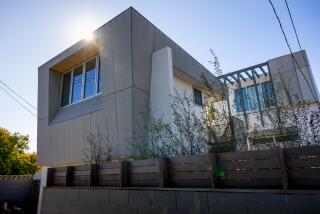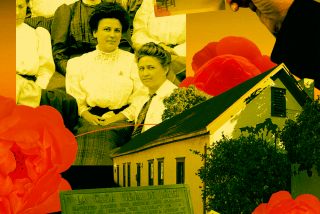Critic’s Notebook: Pritzker Prize jury keeps it minimalist with Eduardo Souto de Moura
It’s time for one of architecture’s rites of spring: reading the Pritzker Prize tea leaves.
So what can we glean from the news that 58-year-old Portuguese architect Eduardo Souto de Moura, barely known outside the profession, was on Monday named the winner of this year’s Pritzker, the field’s top honor?
Taken on its own, the award seems most clearly to honor Souto de Moura’s unwavering commitment over the course of his career to a tough, muscular brand of Minimalist architecture. The seven-member Pritzker jury — which this year included the architects Renzo Piano, Glenn Murcutt and Alejandro Aravena — stressed that Souto de Moura’s recent work remains very close in spirit and approach to his earliest projects, from the 1980s, which went against the grain of the decorative Postmodernism then on the rise.
As a young architect, the jury noted, Souto de Moura “was intensely out of fashion. … As we look back today, the early buildings may seem normal, but we must remember how brave they really were back then.”
In a broader sense, this year’s pick also means that for three years running the Pritzker jury has rewarded work that is formally quite spare, even reserved, not to mention grounded in a specific regional context. Switzerland’s Peter Zumthor, the 2009 winner, and the Japanese duo Kazuyo Sejima and Ryue Nishizawa, last year’s laureates, share with Souto de Moura a precise, reticent approach miles away from the exuberant form-making and global reach of better-known architects such as Jean Nouvel (who won in 2008), Zaha Hadid (2004) or Frank Gehry (1989).
The three most recent winners were lauded mostly for work executed in their home countries, though Sejima and Nishizawa, whose Tokyo firm is called SANAA, have lately been designing buildings around the world. Zumthor, meanwhile, is working on a long-term plan for the Los Angeles County Museum of Art, though that project is in the early stages.
There is also an echo in this year’s award of the 2006 Pritzker, which went to the Brazilian Paulo Mendes da Rocha. Just as Mendes da Rocha long operated in the shadow of Brazil’s most famous architect, 103-year-old Oscar Niemeyer, Souto de Moura is frequently mentioned in the same breath with the great Portuguese architect Alvaro Siza, who won the Pritzker in 1992.
Souto de Moura worked in Siza’s office from 1975 to 1979, and the architects collaborated on the Portuguese pavilion at the 2000 World Expo in Hanover, Germany. Despite the jury’s praise for the consistency of Souto de Moura’s body of work, some of his early buildings show a debt to Siza’s architecture that has faded over time.
Souto de Moura, who like Siza works in Porto, Portugal’s second-largest city, has often been described as a neo-Miesian architect, a reference to the toweringly influential Modernist Ludwig Mies van der Rohe. But Souto de Moura’s best-known projects are not executed in the glass and steel so closely associated with Mies; instead, he works with concrete, stone, brick, copper and wood. And his buildings are often enlivened with splashes of color.
The architect is perhaps best known for his Braga Municipal Stadium, which is pushed directly up against a quarry on one side and features a pair of roof spans suspended dramatically over the stands. Completed in 2003, it was an early part of a wave of ambitious, high-design stadium architecture that crested with the 2008 Olympic Stadium in Beijing, designed by the Swiss firm Herzog & de Meuron.
The Paula Rego museum near Lisbon, completed in 2009, brought Souto de Moura a fresh round of acclaim, if not enough to make him anything close to a household name. The museum is wrapped in a salmon-colored, largely windowless concrete exterior that recalls — rather than Siza or Mies — the work of Louis Kahn. A 1994 house in Bom Jesus, Portugal, also features brawny concrete forms.
Pritzker trend-spotting can be a treacherous business. Particularly if there’s significant turnover in the ranks of the jury, which has been fairly stable (and overwhelmingly male) in recent years, the 2012 pick could suggest an entirely new focus: on fluid digital architecture, say, or on socially minded humanitarian design. Or on work that is concerned with urban design and the broader scale of the city.
For the time being, though, the Pritzker jury is sticking with architecture that aims for a certain timelessness and is stubbornly, expertly pared down to its essentials.
christopher.hawthorne@latimes.com
More to Read
The biggest entertainment stories
Get our big stories about Hollywood, film, television, music, arts, culture and more right in your inbox as soon as they publish.
You may occasionally receive promotional content from the Los Angeles Times.







